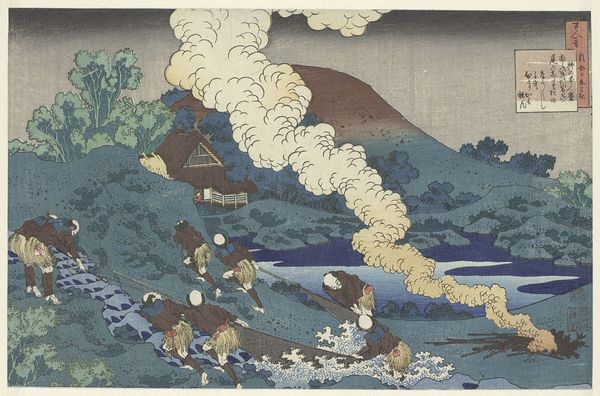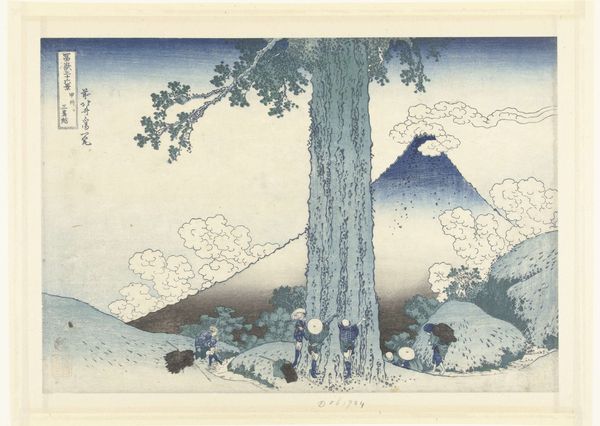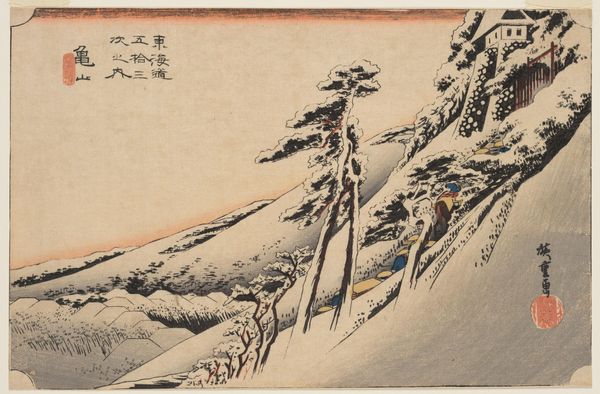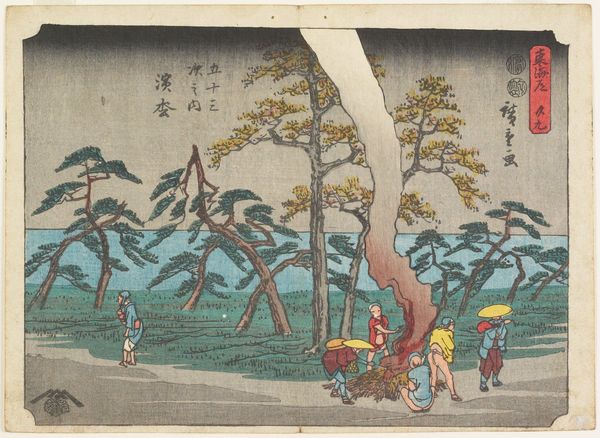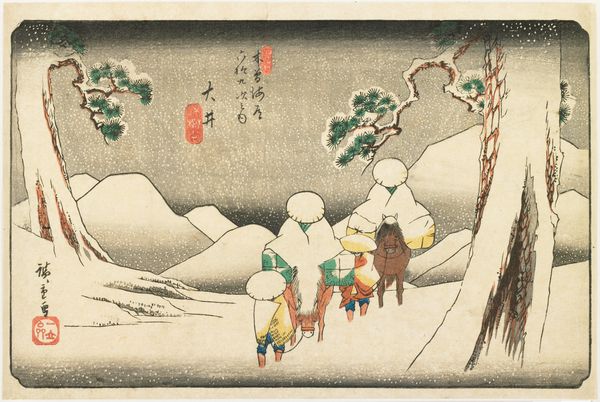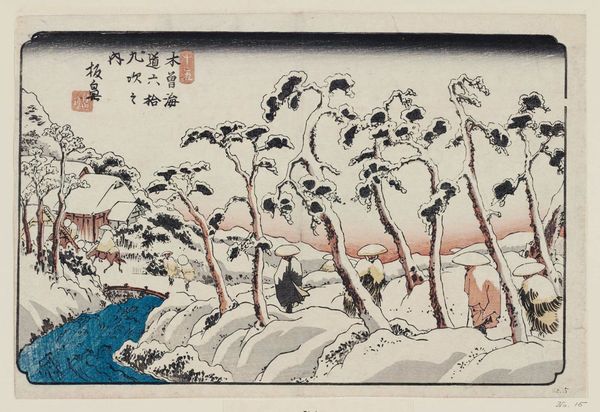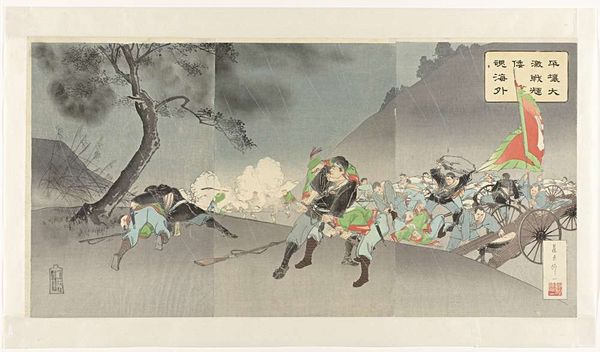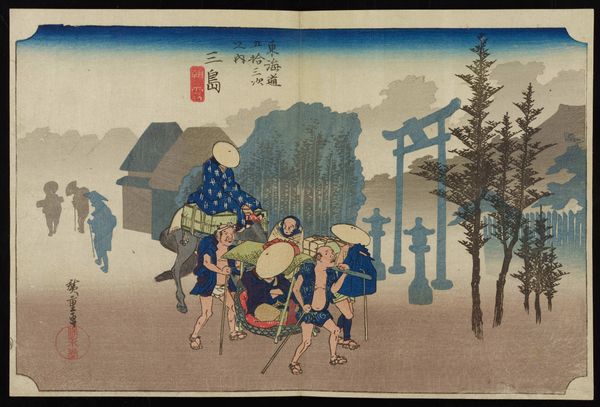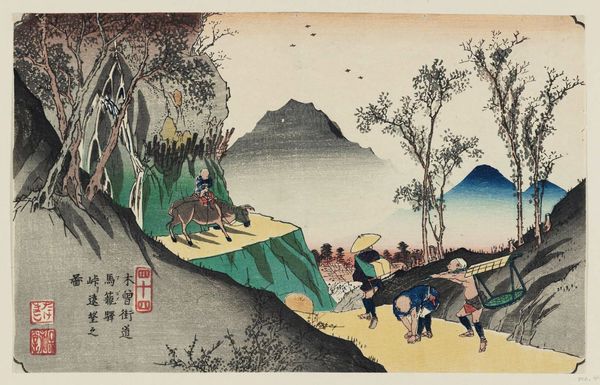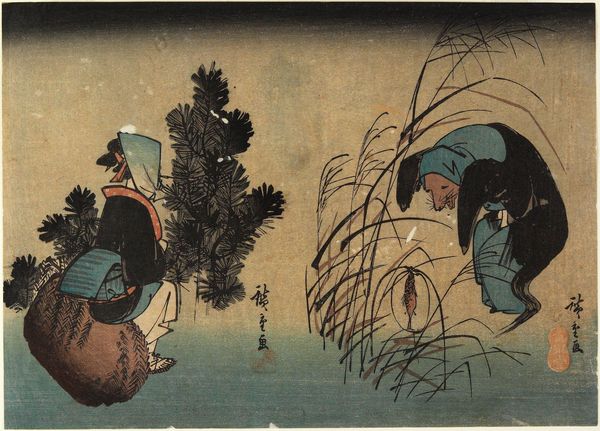
print, woodblock-print
#
tree
# print
#
landscape
#
ukiyo-e
#
folk art
#
forest
#
folk-art
#
woodblock-print
#
mountain
#
naive art
#
decorative art
#
watercolor
Copyright: Public domain
Editor: Here we have a woodblock print attributed to Katsushika Hokusai, called "The Firefighters in the Mountains," now at the Guimet Museum. It definitely gives off a feeling of coldness and vulnerability to me with that intense fire surrounded by a snowy landscape and the small figures huddled around it. What is your interpretation of this work? Curator: It’s tempting to simply see a picturesque scene, but the "Ukiyo-e," or "pictures of the floating world," tradition often captured more than beauty. It portrayed contemporary urban life. Look closely. It’s easy to see these figures merely as anonymous workers struggling against the elements. The mountains here create a vastness in this landscape but the image hints at deeper cultural and institutional narratives about Edo-period society. Editor: What do you mean? Is it the uniforms of the firefighters? Curator: Partially. The firefighters, despite their garb, represent a civic order and duty central to life in Edo, where fires were rampant and devastating. Prints like these became a medium for visually broadcasting these themes of social cohesion. Editor: So, beyond the artistic skill, Hokusai is subtly reinforcing societal norms and values in representing firefighters who serve the Edo community in this mountainous landscape. Curator: Exactly! Hokusai's work becomes not only a scene but an encoding of political ideology. And in a sense, the success of prints lies precisely in this subtle layering; people appreciate the art, seemingly innocuous, while simultaneously absorbing dominant socio-political beliefs. What do you think of the cultural significance and how museums shape them? Editor: That's fascinating! It definitely makes me think about how institutions curate our perceptions of history through art, how even seemingly simple landscapes can convey deeper social meanings. Thanks for opening my eyes to that. Curator: My pleasure. Understanding art within its broader historical and social context is a key. Remember the artwork itself becomes a lens through which to examine the societal fabric.
Comments
No comments
Be the first to comment and join the conversation on the ultimate creative platform.
